Ten Things to Know about the End of Title 42
Instead of limiting asylum access, the Biden administration could be managing historic improvements.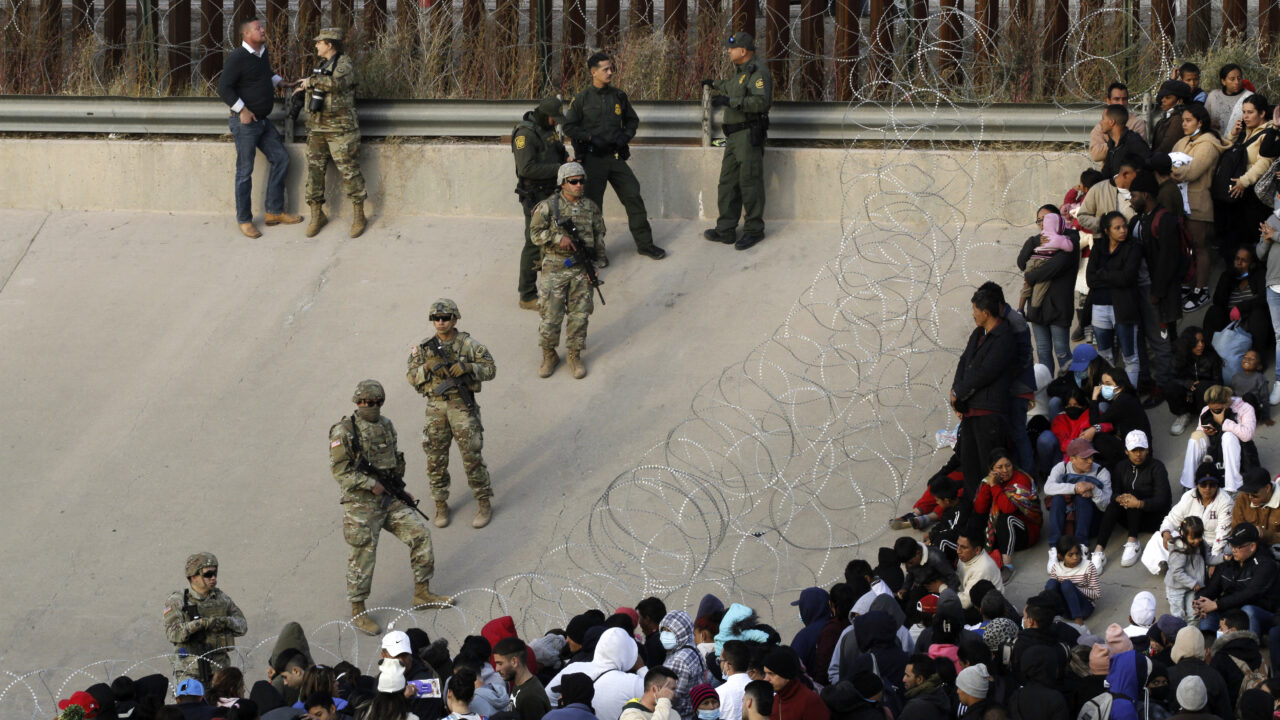 Migrants congregate on the banks of the Rio Grande at the U.S. border with Mexico, Dec. 20, 2022, where members of the Texas National Guard cordoned off a gap in the U.S. border wall. Photo: Morgan Lee / AP.
Migrants congregate on the banks of the Rio Grande at the U.S. border with Mexico, Dec. 20, 2022, where members of the Texas National Guard cordoned off a gap in the U.S. border wall. Photo: Morgan Lee / AP.
May 11 is the final day for the Trump and Biden administrations’ “Title 42” policy, which undid the basic right to seek asylum at the U.S.-Mexico border for 38 months.
Now, 2.8 million migrant expulsions later, the U.S. government is reverting to immigration law as it existed before the world went into lockdown. But as it does so, the Biden administration is adding a new limitation on asylum that, with Mexico’s cooperation, promises to continue the pandemic-era practice of sending asylum seekers away from the United States, placing many in danger.
Media coverage is anticipating a wave of migration at the border, with headlines proclaiming that officials are “bracing for an influx.” Legislators are seeking new ways to block asylum seekers, citing “chaos.” Such concerns are misplaced.
Migration will increase, just as it did before each of Title 42’s earlier, abortive expiration dates. But the post-May 11 increase is likely to be neither giant nor long-lasting. After all, Title 42 hardly deterred migration in the first place: it’s at or near record levels already, right now. And the Biden administration is working, with the Mexican government’s collaboration, to keep asylum out of reach to an extent that may resemble what we’ve already seen over the past 38 months.
Instead of a “migrant wave,” we should be concerned about:
- A questionably legal “asylum transit ban” rule, about to go into effect, that could endanger many thousands of people who, though on U.S. soil, will be denied the legal right to seek protection. It’s not yet clear which nationalities, and which demographics, of migrants would be sent back into Mexico without that right. But if fully implemented, this rule would put asylum out of reach to an extent recalling what we saw during Title 42.
- A worsening crisis of stranded migrants in Mexico’s border cities, resulting from the López Obrador government’s agreement to take back asylum seekers whom the U.S. government rejects, often without giving them a hearing.
- A humanitarian crisis along the migration route, as new nationalities try to traverse treacherous regions like the Darién Gap.
- The continued dysfunction of the U.S. asylum system, and the fragility of the tattered patchwork of alternative pathways to legal entry into the United States.
The situation at the border after May 11 may, for a time, appear disorderly. But it already has been, and it was before the pandemic began. If anything, Title 42’s lifting will make plain the need to reform our immigration system and align it with reality. And it will highlight the U.S. political system’s frustrating paralysis in the face of that challenge.
The facts on the ground bear this out. Here they are, in ten points:
1. May 11 Is a Return to “Normal.” Title 42 Was the Aberration.
With the end of the national emergency that the U.S. government declared for the COVID-19 pandemic, May 11 is set to be the final day for the so-called “Title 42” policy at the U.S.-Mexico border.
The name comes from the section of the U.S. Code (Title 42, Section 264) that justified it: a vaguely written 1944 law allowing limits at border crossings for public health reasons. At the pandemic’s outset in March 2020, the Trump administration interpreted this as allowing immediate expulsions of undocumented migrants at the U.S.-Mexico border, including those seeking asylum in the United States. In most cases, migrants were blocked from even asking for protection.
The Biden administration kept in place the Trump administration’s interpretation of Title 42. As a result, since March 2020 the policy has been used to expel people from the U.S.-Mexico border over 2.8 million times. Of all migrants encountered at the border since March 2020, 50 percent were quickly expelled, usually into Mexico.
The Biden administration ceased the Trump-era practice of expelling children who arrived unaccompanied. However, since March 2020, Title 42 has expelled single adult migrants 64 percent of the time, and migrants arriving as family units 22 percent of the time.
Mexico agreed to take back expelled migrants from some countries: from the very beginning, from El Salvador, Guatemala, and Honduras, and later from Cuba, Haiti, Nicaragua, and Venezuela. Expelled migrants from other countries had to be removed by air, which is expensive and resulted in very low expulsion rates for most other nationalities.
May 11, 2023 is actually Title 42’s fourth expected expiration date.
- In July 2021, the Biden administration had planned to stop expelling family-unit migrants, but changed its position amid an increase in arrivals at the border.
- On May 23, 2022, the Centers for Disease Control and Prevention (CDC) had planned to terminate the policy because of the pandemic’s reduced severity, but were blocked by a suit brought in federal court by Republican state attorneys-general.
- In November 2022, a federal judge struck down the Title 42 policy, finding it “arbitrary and capricious,” setting a termination date of December 21, 2022; the Supreme Court, however, decided to keep it in place while it considered arguments from the Republican states.
If Title 42 does end with the national emergency, as appears likely, the U.S. government will revert back to normal immigration law at the border, sometimes referred to as “Title 8” for the section in the U.S. Code. That means migrants will no longer be expelled without processing. However, as discussed below, the Biden administration plans to put in place measures that will sharply curtail the ability to seek asylum at the U.S.-Mexico border, while continuing returns of third-country migrants into Mexico.
2. Title 42 Hardly Deterred Migrants from Coming.
While Title 42 often gets touted as a “deterrent” policy, the number of migrants arriving at the U.S.-Mexico border reached record levels during the past three years. In 2022, U.S. Border Patrol encountered 1,480,416 individual migrants on 2,206,436 occasions (the rapidity of Title 42 expulsions eased repeat attempts to cross).
Depending on the number of repeat crossings in 2000 (unreported at the time), the 2022 figure may have exceeded Border Patrol’s earlier record of 1,643,679 migrant apprehensions set that year. It’s fair to conclude that Title 42 did not deter migration.
This should not surprise us at a time when the pandemic added to instability throughout the Western Hemisphere, at what was already a moment of high violent crime, de-democratization, and intensifying effects of the global climate crisis. During the Title 42 years, meanwhile, the treacherous Darién Gap jungle region along the Panama-Colombia border ceased to be an impenetrable barrier. Overland migration from South America now exceeds 1,000 people per day.
Title 42 had a modest effect on deterring migration of nationalities subject to expulsion into Mexico. Migrants from those countries—Cuba, El Salvador, Guatemala, Haiti, Honduras, Nicaragua, and Venezuela—did fall in overall rankings of migrant encounters by nationality, but their numbers still remain near 21st century or all-time highs.
3. A Large, Long-Term Increase in Migration Is Unlikely after May 11.
There is certain to be some increase in migration in the runup and immediate aftermath of May 11. Though the deterrent effect was modest at best, Title 42 did bottle up many migrants along the multi-country route south of the U.S.-Mexico border, who were either expelled or prevented from attempting to cross.
“The United Nations recently estimated that there are approximately 660,000 migrants currently in Mexico, including over 200,000 Haitian and Venezuelan nationals, in addition to 287,000 internally displaced Mexican nationals,” CBP’s acting commissioner, Troy Miller, told House appropriators in mid-April. “Many of these individuals could attempt to enter the United States in the near term.”
Some of this number may now attempt to seek protection in the United States, turning themselves in to U.S. authorities. It is impossible to guess how many. Migrants lack clarity about the United States’ complicated asylum and migration rules; they know that the May 11 date is significant, but smugglers and word-of-mouth rumors misinform them.
Border crossings are already increasing, probably beyond what would be normal in May, which is always a peak month due to milder weather. Border Patrol is reporting over 8,700 migrant encounters per day right now. This is similar to the days before December 21, 2022, when Title 42 was last expected to end, when Border Patrol exceeded 9,000 encounters on at least 3 days.
The increase may be short-lived, however. Though it’s impossible to say with certainty, higher numbers around May 11 may owe more to a “clearing of a backlog” than a “new normal.” If the Biden administration uses other means (discussed below) to block pathways to protection at the border, something very similar to today’s expulsions will continue, and the situation could resemble the Title 42 period: high levels of migration but not a giant increase.
4. Nationalities of Migrants Changed Dramatically during Title 42’s 38 Months.
Until 2020 (when it dropped to 89 percent), over 90 percent of migrants apprehended at the U.S.-Mexico border were always from Mexico and northern Central America (El Salvador, Guatemala, and Honduras). By 2022, however, that share had dropped to 57 percent.
In fiscal 2020, the top four nationalities encountered at the border were Mexico, Guatemala, Honduras, and El Salvador. Over the first six months of fiscal 2023, Mexico is still first, but Guatemala has fallen from second to fifth, behind Cuba, Nicaragua, and Colombia. Honduras is sixth. El Salvador is 11th, behind Venezuela, Ecuador, Peru, and Haiti.
The reasons behind these shifts in nationalities are complex and overlapping. They include the pandemic’s economic fallout, insecurity (Latin America, with 9 percent of the world’s population, accounts for a third of the world’s homicides), climate change and natural disasters, political unrest and persecution, country-specific humanitarian crises (Cuba, Haiti, Venezuela), family reunification, and the increasing ability to travel through the once impassible Darién Gap.
With the “opening” of the Darién Gap route, migration from South America has increased sharply. Comparing the first six months of fiscal 2023 to the same period in fiscal 2021, migration from Colombia has increased by 18,030 percent (from 492 to 89,201 encounters), and migration from Peru has increased by 12,901 percent (from 356 to 46,284 encounters). Venezuela is up by 1,319 percent (4,307 to 61,129).
Migration from beyond the Americas also increased dramatically during the Title 42 period. Comparing the first six months of fiscal 2023 with the same period in fiscal 2021, encounters with migrants from Turkey are up 10,599 percent (85 to 9,094); Russia 7,729 percent (389 to 30,455); China 7,122 percent (92 to 6,644); and India 3,365 percent (502 to 17,392).
Only two countries whose citizens are subject to Title 42 expulsion into Mexico saw reductions during this same period: -24 percent from Honduras (99,455 to 75,824) and -13 percent from Guatemala (98,420 to 85,664).
5. The U.S. Government Will Still Be Turning Away Asylum Seekers, Perhaps Massively.
The Biden administration intends to deny opportunities to seek asylum to some migrants who request it while on U.S. soil. Under a draft rule set to go into effect as early as this week, the U.S. government would refuse asylum processing to many migrants who (1) crossed between ports of entry, and (2) passed through other countries on their way to the U.S.-Mexico border without first seeking and being denied asylum in those countries.
We don’t yet know how aggressively and completely the U.S. and Mexican governments will implement the new “transit ban” rule. Preliminary reports indicate, for instance, that single adult migrants may be far more subject to it than those traveling as families. If carried out aggressively, though, it will result in returns of asylum seekers on a scale rivaled only by the Title 42 experience.
Under this “transit ban,” migrants who meet the above two criteria would face a “rebuttable presumption of asylum ineligibility.” Many asylum seekers, especially single adults, would be placed into “expedited removal” proceedings in which they would have to defend their asylum claims while still in CBP’s very austere custody conditions, in a phone call with an asylum officer.
The rule would partially shut down, to a historic and legally questionable extent, the right to seek asylum upon reaching U.S. soil, as laid out in Section 208 of the Immigration and Nationality Act and in the 1951 Refugee Convention.
6. This Is Probably Not Legal.
Once the new rule goes into effect, litigation is certain. ACLU attorneys who participated in litigation that ended a Trump-era effort to impose an asylum transit ban are poised to file suit once again. As WOLA has pointed out, the new rule bears a strong resemblance to the provision that the Trump administration failed to impose.
Biden officials insist that this “rebuttable presumption” rule is different from the Trump-era ban, claiming that it will increase access to counsel and allow alternative pathways, like making asylum appointments available via the CBPOne smartphone app (discussed below).
The new rule, though, sits on shaky legal ground. Section 208 of the INA, the asylum statute, codifies the right to apply for asylum enshrined in the 1951 Refugee Convention, to which the United States is a signatory. This law makes no distinction about how the non-citizen applicant arrives in the United States. Those who enter without inspection by crossing the land border between ports of entry may have committed a misdemeanor (8 U.S. Code Sec. 1325), but nothing in the law indicates that their manner of entry has any bearing on their eligibility to apply for asylum.
How and where an asylum seeker crossed into the United States does not matter. How many countries through which the asylum seeker passed does not matter.
The draft rule’s justification text contends that Section 208 also “authorizes the Secretary and the Attorney General to ‘establish’ ‘requirements and procedures’ to govern asylum applications.” It further argues that the INA, in Section 208(b)(2)(C), empowers the Attorney General to, “by regulation, establish additional limitations and conditions, consistent with this section, under which an alien shall be ineligible for asylum.”
During Title 42, U.S. border authorities turned back many thousands of would-be asylum seekers, leaving them no alternative means of asking for protection
The key phrase here is “consistent with this section.” Adding a sweeping new exception to the right to seek asylum, one that may place thousands of people in grave danger, is hardly consistent with either the letter or the spirit of the INA’s asylum provisions.
The proposed rule is neither a technical nor a cosmetic “fix.” It is a dramatic denaturing of the right to seek asylum. The asylum ban, paired with the expedited removal process, will fuel mass deportations of people who could otherwise qualify for asylum. It is hard to argue that this is consistent with Section 208.
7. Still, It Will Be at Least Somewhat Easier to Seek Asylum at the Border than during Title 42.
Unlike the most intense period of Title 42’s implementation, a narrow pathway to asylum now exists, and it is being modestly broadened. This pathway, a technological solution, nonetheless remains problematic.
During Title 42, U.S. border authorities turned back many thousands of would-be asylum seekers, leaving them no alternative means of asking for protection. Later, authorities and humanitarian advocates cobbled together systems for making available a handful of asylum appointments, at ports of entry, for “most vulnerable” migrants stranded in Mexican border cities.
This Title 42 exemptions process gave way in January 2023 to a system in which a limited number of especially vulnerable migrants per day (764 per day border-wide in March) could make an appointment at a port of entry via a new feature on U.S. Customs and Border Protection (CBP)’s smartphone app, “CBPOne.”
The CBPOne experience has so far been riddled with frustrations. Each day’s appointments run out in a matter of minutes, as migrants with outdated phones struggle to gain a spot over wi-fi connections in underfunded shelters all across the Mexican side of the border. Much press and NGO coverage has documented chronic bugs, including difficulty registering darker-skinned faces. Some families have separated due to a lack of available appointments for all members.
In early May, CBP announced improvements to the app, including an increase to 1,000 appointments per day and a system that will benefit those who had registered first. Still, though, the app has created an “asylum lottery” that benefits the most technically adept and those with the best connectivity—who are not necessarily those in greatest need of protection. It also endangers people—especially Mexican citizens—whose threats are so imminent that they do not have weeks to wait in Mexico for appointments.
8. Mexico Has Agreed to Let Its Border Cities Continue to Fill Up with Stranded Migrants.
If the United States had to expel all non-Mexican migrants to their home countries, rather than to Mexico, then Title 42’s expulsions would have been infrequent. It is costly to remove someone by air, and the contractor fleet run by U.S. Immigration and Customs Enforcement (ICE) is of limited size.
The Trump and Biden administrations, then, have relied heavily on the willingness of the government of Mexico, and its President Andrés Manuel López Obrador, to accept expulsions of non-Mexican migrants. During the first six months of fiscal 2023, CBP used Title 42 to expel into Mexico citizens of Cuba, El Salvador, Guatemala, Haiti, Honduras, Nicaragua, and Venezuela roughly 130,000 times (counting months when Mexico accepted those countries’ citizens).
As the Biden administration prepared the asylum transit ban and other measures to limit access to asylum, it was unclear whether Mexico would continue to accept U.S. removals of third-country migrants into its territory. When Mexico had done so in the past, it conditioned such removals on the migrants having pending asylum court dates in the United States (the “Remain in Mexico” policy), or relied on the fiction that expelled migrants were never officially recognized as having entered the United States (Title 42). Now, though, the third-country migrants would be deportees—often, deportees denied a chance to seek asylum. Would Mexico accept them?
The answer came deep within a May 2 joint statement from the U.S. and Mexican governments: “Mexico will continue to accept back migrants on humanitarian grounds.”
We know little more than that about the Mexican government’s intentions. Mexico has said “yes” to receiving third country deportees, but it remains unclear how qualified this “yes” is. Is it limited to some nationalities and demographic groups? Is there a monthly or daily limit? Is it conditioned on the Biden administration’s continued offer of humanitarian parole to 30,000 citizens per month from Cuba, Haiti, Nicaragua and Venezuela—a program threatened by litigation from Republican state attorneys-general?
Unlike expulsions, which involved migrants being left at the borderline with no official reception, will third-country citizens’ deportations happen with Mexican officials present, as happened under Title 8? If so, will those deportations once again respect mid-2010s local repatriation agreements that prohibited dangerous practices like removing people to Mexican border cities in the middle of the night?
None of that is clear yet. What is clear is that Mexico’s agreement to take back people deported under the asylum transit ban will further swell the population of third-country migrants in Mexico’s border cities. Cities like Tijuana, Ciudad Juárez, Nuevo Laredo, Reynosa, and Matamoros have some of Mexico’s highest violent crime rates, and as past reporting from groups like Human Rights First has shown, criminals and corrupt officials routinely prey on migrants.
Meanwhile, shelters are at or near capacity, and troubling incidents are increasing, like the formation of squalid encampments, people being misled into massing at border bridges, and a horrific March 27 fire in a Ciudad Juárez detention center that killed 40 people. The effect of this policy in Mexico’s border cities will be to destabilize an already precarious situation and to multiply suffering.
At a time of historic worldwide migration, it is incumbent upon the United States to increase investments in processing, alternatives to detention, and adjudication.
9. Instead of Limiting Asylum Access, the Biden Administration Could Be Managing Historic Improvements.
Once on U.S. soil, Section 208 gives non-citizens the right to ask for protection in the United States, and to receive it if they are judged to face threats to life or freedom “on account of race, religion, nationality, membership in a particular social group, or political opinion.”
Knowingly sending a person back to a country where they face such a threat is known as refoulement, a human rights violation prohibited by both U.S. and international law. Not all asylum seekers qualify for it, but those who do are far more common than “needles in haystacks”: 52 percent of U.S. immigration judges’ asylum decisions in fiscal 2022 were grants of asylum or other relief.
Avoiding refoulement, then, demands a careful process. At a moment of historic levels of protection-seeking migration, that process requires robust resources. Among the most urgent needs are:
- Processing: the ability to take someone into custody and perform checks (criminal background, family relationships, health status), enter identification data, and begin asylum paperwork.
- Alternatives to detention: releasing asylum seekers into the U.S. interior in a way that allows them to participate in the labor force, in order to support themselves economically while awaiting their court appearances. Well-designed alternatives to detention programs ensure that virtually all participants remain in the system and are aware of available services. And they cost much less than detention in ICE’s prison-like facilities.
- Adjudication: the U.S. immigration court system must have sufficient resources and personnel to try cases as quickly as due process allows. Right now, that is badly lacking: a workforce of 659 judges is creaking under a backlog of 1,874,336 cases (of which asylum cases are a fraction), and asylum cases often take more than five years to resolve. Recent hiring increases must sustain and accelerate. And under a functioning asylum system, if a judge denies asylum, migrants are then either returned, or able to access other available pathways (discussed below) to remain in the United States.
At a time of historic worldwide migration, it is incumbent upon the United States to increase investments in processing, alternatives to detention, and adjudication: a wiser option than walls and detention centers. Meeting these needs is the key to an efficient, fair asylum system that fulfills, with neither drama nor chaos, longstanding commitments made under U.S. and international law.
10. The Administration Is Backing Other Pathways for Legal Migration and Work, but They Are No Substitute for Reform.
While the Biden administration’s asylum transit ban rule is in effect, it appears that the only pathway to the U.S. asylum system—with a few still-unclear exceptions—will be the 1,000 daily CBPOne appointments at land-border ports of entry.
Beyond asylum, people seeking admission to the United States at the U.S.-Mexico land border face a tattered patchwork of options. The Biden administration has worked to expand some of these options, but without fundamental legislative reforms to the U.S. immigration system, this piecemeal approach is the only way to bring policy into even a distant semblance of alignment with reality. Existing non-asylum pathways include:
- A humanitarian parole program, providing a two-year status in the United States, with work permit eligibility, to a combined 30,000 citizens per month from Cuba, Haiti, Nicaragua, and Venezuela. This program benefited 27,783 people in March, CBP reports. Republican state attorneys-general are pursuing litigation to terminate this program, with arguments scheduled for mid-June.
- In October 2022, the administration made available an additional 20,000 H-2B non-agricultural temporary work visas for citizens of El Salvador, Guatemala, Honduras, and Haiti. During fiscal 2022, the U.S. government made available about 114,000 H-2B visas to citizens of Western Hemisphere countries, 74 percent of them (84,495) from Mexico.
- During fiscal 2022, the Department of Labor certified about 370,000 H-2A temporary visas for agricultural workers. This is a worldwide figure; the number from the Americas is unknown, but likely a large majority.
- The White House announced in January its intention to increase refugee admissions from Latin America and the Caribbean to 20,000 per year.
- The Department of Homeland Security (DHS) announced in late April a new family reunification parole process for El Salvador, Guatemala, Honduras and Colombia, building on an existing program for Cuba and Haiti. “The United States intends to welcome as many as 100,000 individuals from Honduras, Guatemala, and El Salvador,” read a May 2 joint announcement with Mexico, which did not specify a timeframe. The Cuba program intends to accept a minimum of 20,000 people each year; the size of the Haiti program is unknown.
- The Central American Minors Program allows children with parents lawfully present in the United States to apply for refugee status. It benefits a small number of children each year.
Combined with CBPOne appointments, these programs—if employed to their maximum extent—could permit over 1 million people to be legally admitted into the United States each year, nearly all with a soon-to-expire temporary status or a status contingent on asylum case outcomes. One million comprises less than half of the number of individuals currently being apprehended at the border (1,480,416), combined with the number whom Border Patrol believes has avoided apprehension (737,244).
In late April, DHS announced that the U.S. government will open “Regional Processing Centers” where would-be migrants can, after scheduling appointments on their phones, “receive an interview with immigration specialists, and if eligible, be processed rapidly for lawful pathways to the United States, Canada, and Spain.” The first such centers may open in Colombia and Guatemala.
These Centers could offer migrants a vital way to avoid embarking on dangerous journeys and to overcome misinformation. However, if appointments turn out to be scarce and hard to obtain, and if most migrants simply get told they have no legal options among the existing “tattered patchwork” of pathways, then the entire effort’s credibility will suffer.
Your support matters…Independent journalism is under threat and overshadowed by heavily funded mainstream media.
You can help level the playing field. Become a member.
Your tax-deductible contribution keeps us digging beneath the headlines to give you thought-provoking, investigative reporting and analysis that unearths what's really happening- without compromise.
Give today to support our courageous, independent journalists.



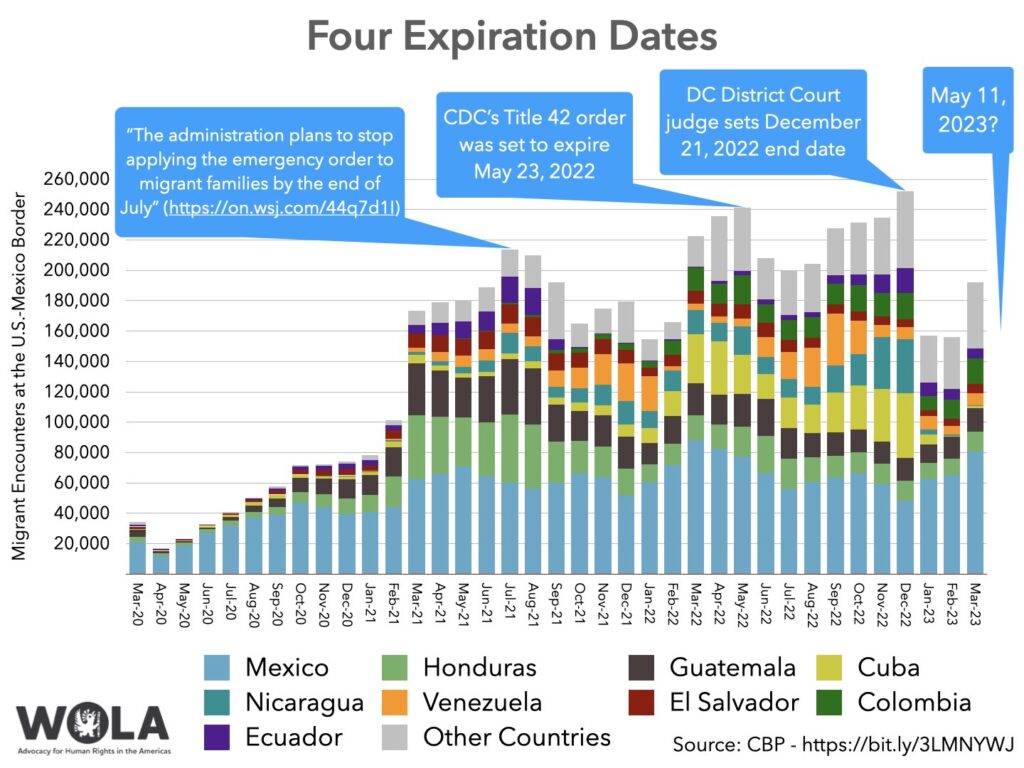
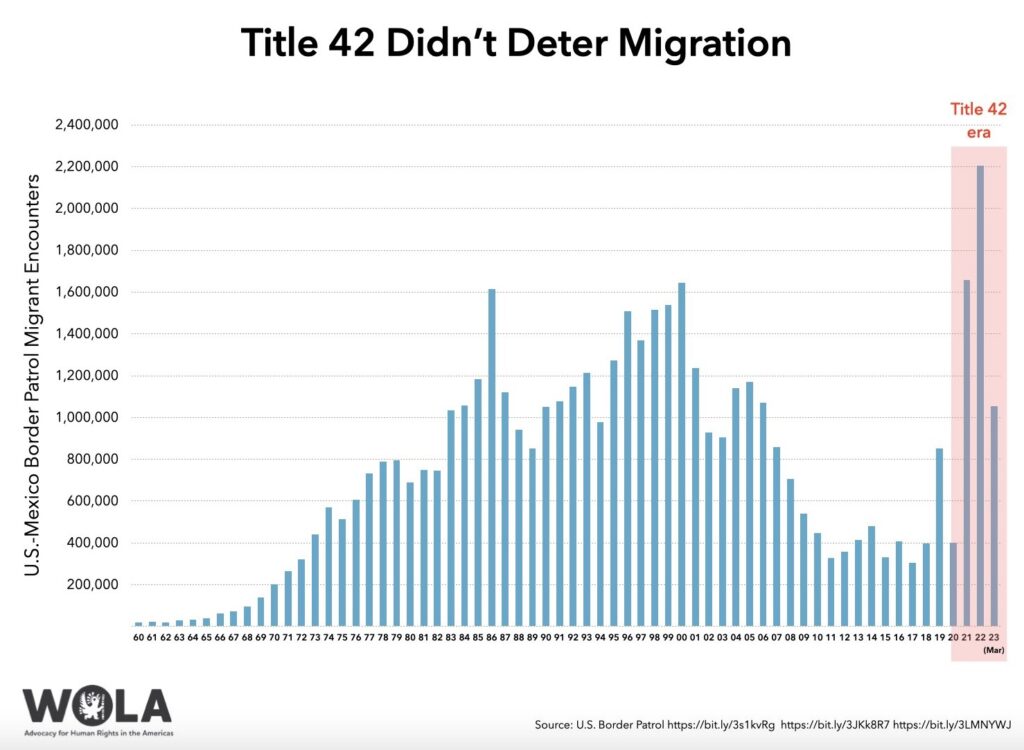
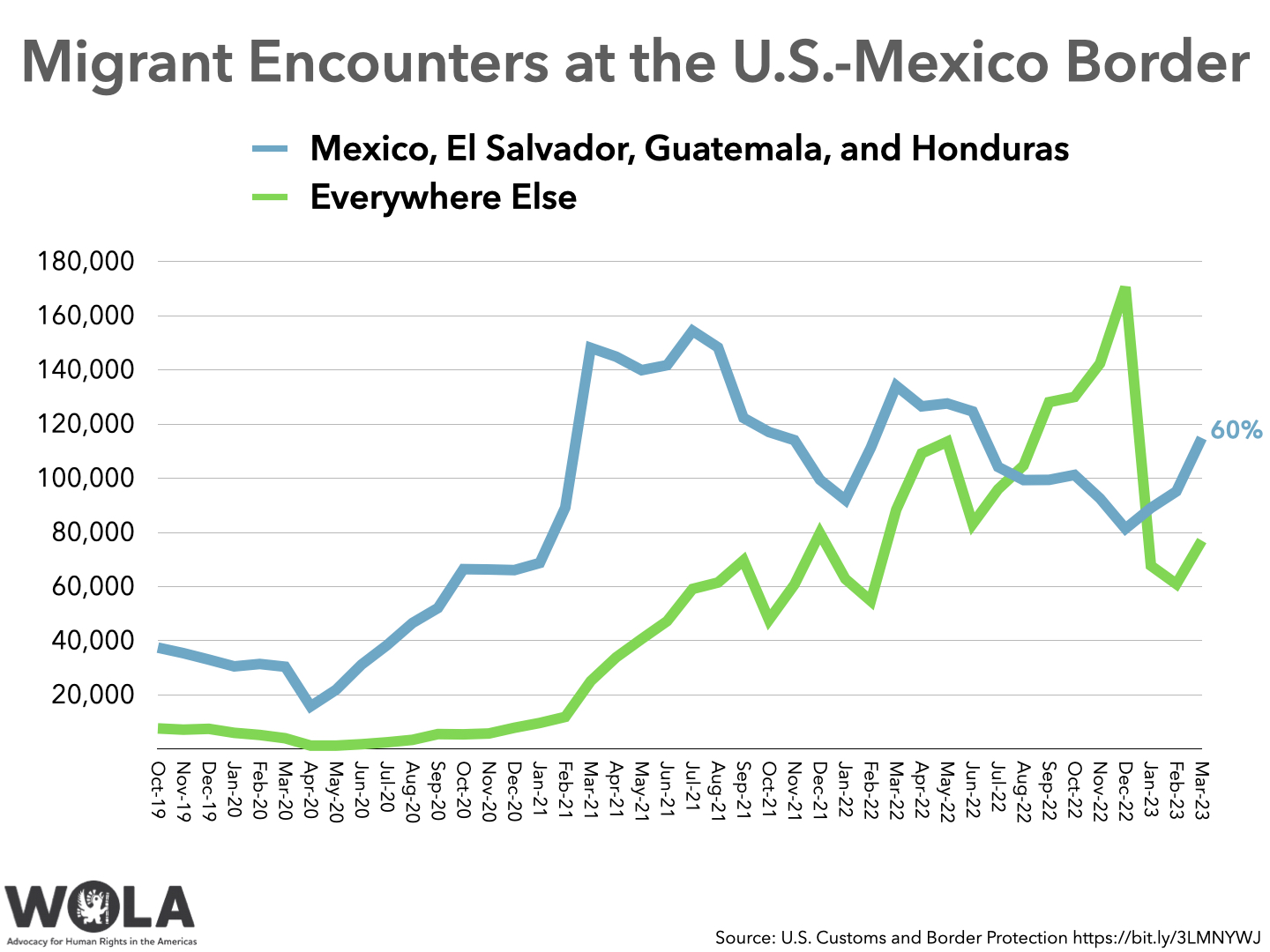

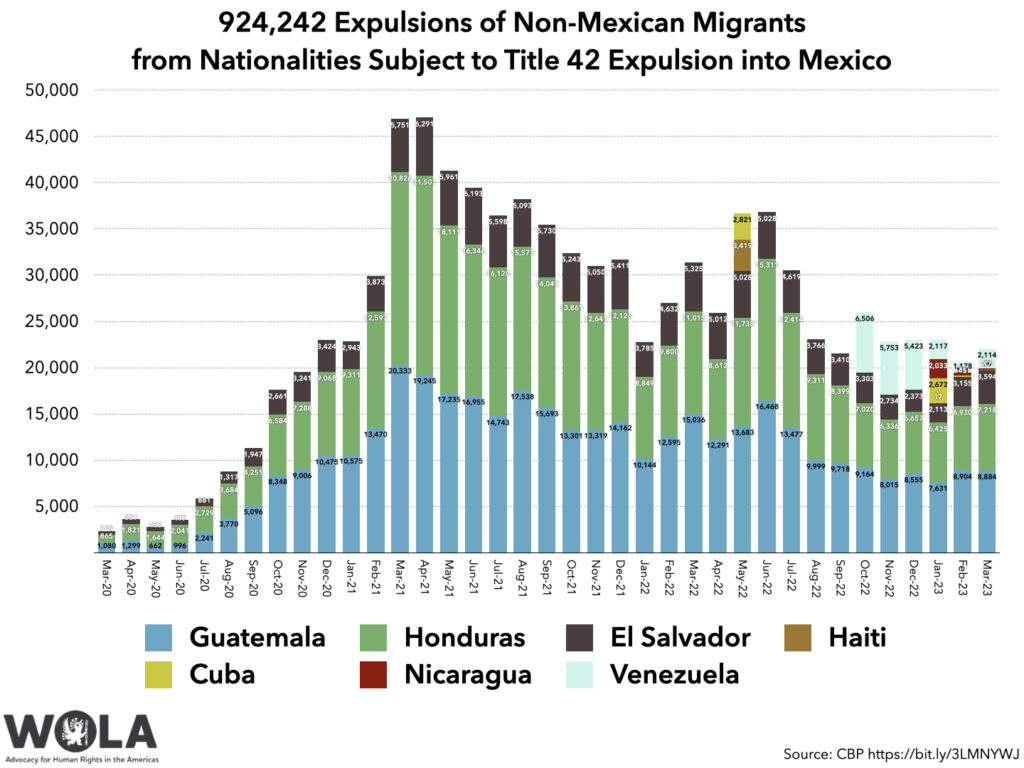








You need to be a supporter to comment.
There are currently no responses to this article.
Be the first to respond.